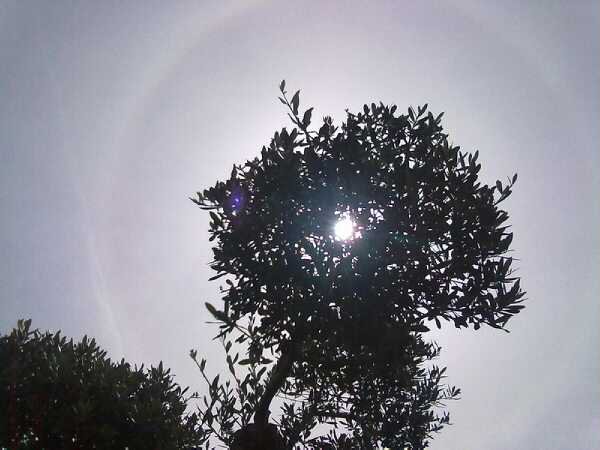(The pillars marking the road serve as a reference: they point the way and serve as a reminder of the kilometers left to Santiago.
This is in the entrance of Tuy – first town on the Spanish part of the road)
(Camino during it’s passage through Ponte de Lima)
This is a foto-journal from the Portuguese way to Santiago de Compostela. For it’s making the author simply used a mobile phone’s cam, so the quality of the pictures lacks a bit of definition. During it’s making, the author simply tried to give the reader some of the spirit of the pilgrimage to Santiago using the point of view of someone who’s walking peacefully and with no need to hurry during the way.
FIRST DAY: Ponte de Lima/ Rubiaes
(Streets of Ponte de Lima - Portugal)
The local festivity, the spirit of the people carved in stone, wood and metal – this is the frame in which the camino is painted
(main church and square at Ponte de Lima)
(Yellow arrows pointing the way on a Portuguese road near Rubiaes)
There are as many reasons to walk the “Camino” as pilgrims we may find during the pilgrimage. For certain, there are more cultural and personal reasons filling the inner self of the modern walker than religious motives to walk as the pilgrims used to have in the past…
(romanic style church in Rubiaes - main door)
(
Rubiaes church - yard)
SECOND DAY: Rubiaes/ Tui (Spain)
(old stones from roman times sorrounded by traditional walls near Sao Bento - Portugal)
From the old Roman paved roads – as the one we follow: via asturica XIX – to the medieval and rural Portuguese traditional roads – there are echoes of history, culture and legend all along the way
(Signing post near the border with Spain)
The old and the new melt in an original way to feel nature, people and the self – during a fantastic journey amongst hills and valleys echoing voices from the past and steps of others who walked before
(The typical pilgrim’s backpack next to a roman stile bridge in Cerdal)
The religious aspects of the Camino come to the surface with the hospitality and welcoming spirit we may feel all along the towns and small little places we cross as well as in the people’s attitude towards the pilgrims
(Sao Bento - Portugal)
The reasons behind the architecture of the camino can be found when we put together people from different countries, different cultures walking together towards the same goal, trying to find balance next with others at the same time they struggle on a quest with some adversity to be stepped beyond – the camino may be seen as a bridge between people as well as the first european cultural road
(traditional familly house inside the fortress of Valença)
(Portuguese typical tilled house - fortress of Valença)
(cannon inside the fortress of Valença)
(XIII century church - Valença)
(river Minho, with the spanish town of Tui over the horizon. International Bridge between Valença and Tui)
(streets of Tui)
(entrance to the "Albergue" of pilgrims, where we may spend the night for a reasonable price - Tui)
(cathedral of Tui, Spain - main door)
Old stones, new ways to learn what different cultures have leaned all away the long pilgrimage of history
(Monument to evangelization – Tui’s main square)
THIRD DAY: Tui/ Porriño
The links with the past can be seen as the objective way to learn how to build a present thinking about the future
("horreo" or "espigueiro" near Tui outskirts)
Some of the mainly reasons can be simply to know ourselves a bit better and to start travelling towards the center… our heart
Long is the list of reasons to start the camino… some of them with lots of humor and strong interests to know in a deeper way the land and the people as we step across the villages



































